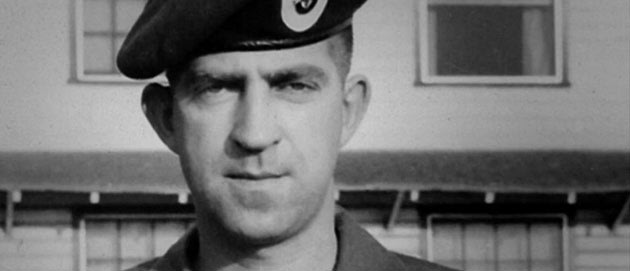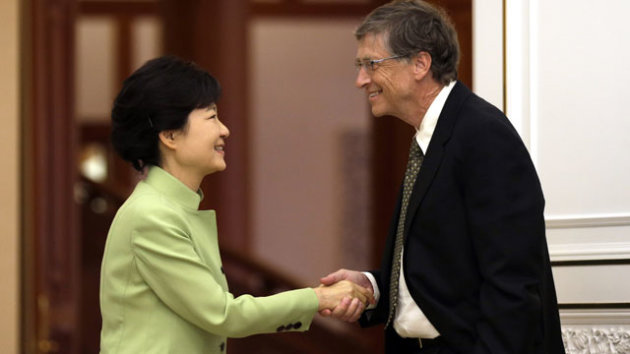Is Apple Killing the Icons That Jobs Built?
One of the guiding principles that has allowed Apple (NASDAQ: AAPL )
to build a consumer electronics company that briefly allowed it to
become the biggest company on Earth was to make things that were sleek,
intuitive, and instantly recognizable as premium devices. This was a
part of Steve Jobs' vision, and a central reason why the company has had
so much success to date. A recent report from 9to5Mac's Mark
Gurman suggests that Apple is on the verge of throwing out some of the
most recognizable parts of iOS as a part of an overhaul that is known as
"Innsbruck." At a time when investors and consumers are clamoring for
the next big thing from Cupertino, killing the icons that Jobs built
seems poorly timed.

Pursuant to Jobs' vision, current icons and graphics have a glossy, polished look and feel that speak of the premium nature of the products they come installed on. Additionally, Apple iOS software representations of tangible objects are designed to look like what they are -- the calendar looks like a physical calendar and the notepad looks like a yellow legal pad. This was fundamental to how Jobs wanted his products to function and aided the sense that Apple made things that were easy-to-understand upgrades from classic tools.
The Innsbruck iteration of iOS, assuming that the rumors are accurate, will be a shocking departure for most current users. The glossy, 3-D representations will give way to flat ones, and the visual cues that tie physical tools to virtual ones will be abandoned as well. Gurman compared the "flatness" of the planned icons to the appearance of the Microsoft (NASDAQ: MSFT ) Windows Phone Metro user interface. This would be the first major overhaul of this kind to iOS since the iPhone made its debut.
Chasing Microsoft?
While Microsoft builds powerful and functional products, the company's user interface missteps are legendary. The idea that Apple may be scrapping its identity for something even similar to a Microsoft UI seems like madness. So coveted is the Apple look and feel that Samsung, Google (NASDAQ: GOOG ) , and others have long been accused of outright copying.
The impetus for the change is Apple's top designer, Jony Ive, and a growing contingent of those in Cupertino looking to move the company's image forward. Without any desire to sound like an alarmist, and allowing for the reality that we are dealing in rumor -- although Gurman has a reputation for getting good information -- this seems like a very dangerous proposition. Customers and investors have already expressed concerns that Apple isn't innovating quickly enough; changing one of the things that people like the most is a huge risk.
While there are times when refreshing what has become stale can be a good idea, suddenly fixing things that are not only not broken, but also the basis of your success, is the hallmark of mismanagement. Apple should continue to do what is does better than any other company in the world and not alter those key building blocks that got it here. Jobs' vision may not be able to last forever, but radically abandoning it is not prudent.
Apple fans have long bristled at comparisons between Jobs and current CEO Tim Cook. This may be rooted in the fact that filling Jobs' shoes is a practical impossibility, but legendary leaders frequently leave vacuums in their wakes. The potential of a cheap iPhone, a cheap iPad, and now a redesign of some of the most fundamental parts of iOS demonstrate that Apple is heading down into a new era. Investors should pay careful attention to this story, because an iPhone 5S that no longer looks like an iPhone could be a significant blow.
There's no doubt that Apple is at the center of technology's largest revolution ever and that longtime shareholders have been handsomely rewarded, with more than 1,000% gains. However, there is a debate raging as to whether Apple remains a buy. The Motley Fool's senior technology analyst and managing bureau chief, Eric Bleeker, is prepared to fill you in on reasons to buy and reasons to sell Apple and what opportunities are left for the company (and your portfolio) going forward. To get instant access to his latest thinking on Apple, simply click here now.
The Death of the PC
Privacy / Legal Information


Source: Apple
The Jobs look and feelPursuant to Jobs' vision, current icons and graphics have a glossy, polished look and feel that speak of the premium nature of the products they come installed on. Additionally, Apple iOS software representations of tangible objects are designed to look like what they are -- the calendar looks like a physical calendar and the notepad looks like a yellow legal pad. This was fundamental to how Jobs wanted his products to function and aided the sense that Apple made things that were easy-to-understand upgrades from classic tools.
The Innsbruck iteration of iOS, assuming that the rumors are accurate, will be a shocking departure for most current users. The glossy, 3-D representations will give way to flat ones, and the visual cues that tie physical tools to virtual ones will be abandoned as well. Gurman compared the "flatness" of the planned icons to the appearance of the Microsoft (NASDAQ: MSFT ) Windows Phone Metro user interface. This would be the first major overhaul of this kind to iOS since the iPhone made its debut.
Chasing Microsoft?
While Microsoft builds powerful and functional products, the company's user interface missteps are legendary. The idea that Apple may be scrapping its identity for something even similar to a Microsoft UI seems like madness. So coveted is the Apple look and feel that Samsung, Google (NASDAQ: GOOG ) , and others have long been accused of outright copying.
The impetus for the change is Apple's top designer, Jony Ive, and a growing contingent of those in Cupertino looking to move the company's image forward. Without any desire to sound like an alarmist, and allowing for the reality that we are dealing in rumor -- although Gurman has a reputation for getting good information -- this seems like a very dangerous proposition. Customers and investors have already expressed concerns that Apple isn't innovating quickly enough; changing one of the things that people like the most is a huge risk.
While there are times when refreshing what has become stale can be a good idea, suddenly fixing things that are not only not broken, but also the basis of your success, is the hallmark of mismanagement. Apple should continue to do what is does better than any other company in the world and not alter those key building blocks that got it here. Jobs' vision may not be able to last forever, but radically abandoning it is not prudent.
Apple fans have long bristled at comparisons between Jobs and current CEO Tim Cook. This may be rooted in the fact that filling Jobs' shoes is a practical impossibility, but legendary leaders frequently leave vacuums in their wakes. The potential of a cheap iPhone, a cheap iPad, and now a redesign of some of the most fundamental parts of iOS demonstrate that Apple is heading down into a new era. Investors should pay careful attention to this story, because an iPhone 5S that no longer looks like an iPhone could be a significant blow.
There's no doubt that Apple is at the center of technology's largest revolution ever and that longtime shareholders have been handsomely rewarded, with more than 1,000% gains. However, there is a debate raging as to whether Apple remains a buy. The Motley Fool's senior technology analyst and managing bureau chief, Eric Bleeker, is prepared to fill you in on reasons to buy and reasons to sell Apple and what opportunities are left for the company (and your portfolio) going forward. To get instant access to his latest thinking on Apple, simply click here now.




















